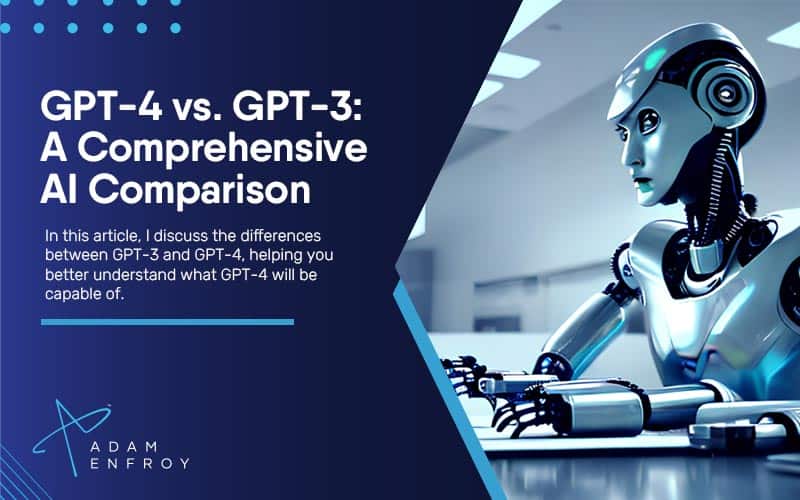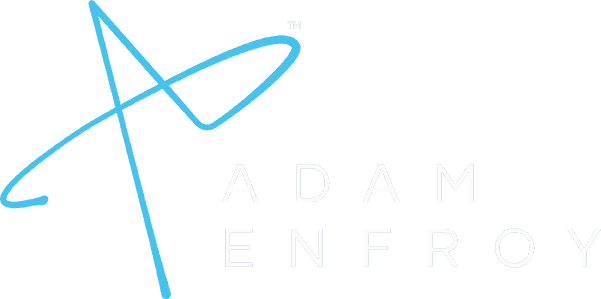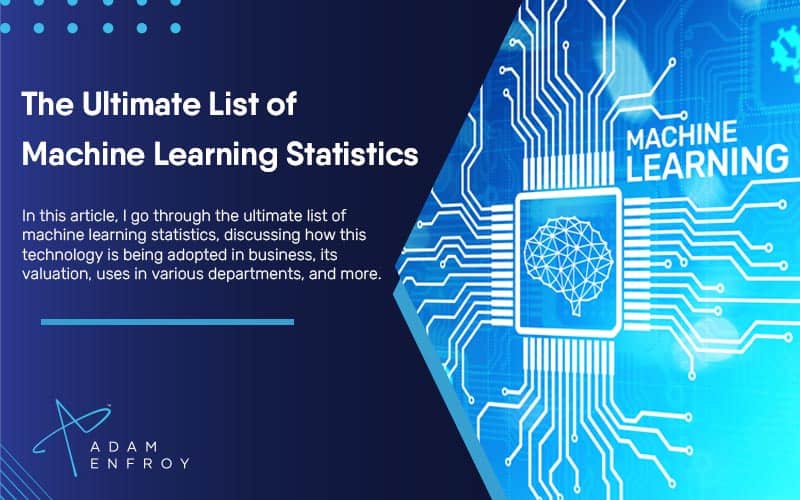GPT-4 vs. GPT-3: A Comprehensive AI Comparison

While many know of GPT-3 and its various applications, GPT-4 will offer a significant leap forward in the field of NLP.
GPT-4 is an improved version of GPT-3, which is a deep-learning language model released in 2020 by OpenAI.
In this article, I’ll discuss the differences between GPT-3 and GPT-4, helping you better understand what GPT-4 will be capable of.
What Is GPT?
GPT stands for Generative Pre-trained Transformer, an AI model that uses deep neural networks to generate natural language from a given prompt.
OpenAI developed this powerful technology to output human-readable text generation from various data sets.
Using self-supervised learning methods, GPT can produce highly accurate natural language results in a fraction of the time compared to traditional language processing techniques.
Generative pre-trained transformer technology offers many benefits for businesses and individual users.
Businesses can use it for tasks such as summarizing customer feedback or creating content recommendations based on user searches.
It can also help streamline processes such as answering customer inquiries or responding to online reviews quickly and accurately—saving valuable time and resources.
On an individual level, users can benefit from having access to more brilliant AI assistants that can understand complex questions better without requiring explicit programming instructions.
Social media is another area where one can use generative language models extensively.
Using natural language processing for sentiment analysis, OpenAI has developed an algorithm capable of creating meaningful conversations from an initial prompt.
In a social media context, this allows users to create content that engages and provides a more personalized touch.
Let’s now explore GPT-4 and GPT-3 and how these large language models work.
What is GPT-3?
GPT-3 is the third improved version of the original GPT model developed by OpenAI in 2018.
Following GPT-2, this iteration comes from the fact developers trained it on a much bigger dataset.
With as many as 175 billion parameters, GPT-3 provides more accurate results when generating texts.
Furthermore, its larger size requires even less data than other language models (such as BERT or XLNet) to achieve good results.
Both when performing natural language processing or question-answering tasks, this remains true.
GPT-3 is a data science tool for various tasks, such as summarizing customer feedback or generating content recommendations based on user searches.
It has also taken deep learning models to a new level, as the platform can understand complex questions better without requiring explicit programming instructions.
This language model predicts entries in language translation tasks, summarizes articles, and generates new content.
What Is GPT-4?
GPT-4 is the next model that will come after GPT-3 and is an extensive language model predicted to launch in 2023.
Being the fourth iteration in the GPT architecture, it comprises machine learning algorithms that can generate natural language text based on context.
It works by taking in large amounts of data and using an artificial neural network to identify patterns in that data.
From there, it can generate new content based on those patterns, allowing for a more accurate language representation.
Everyday use is for text summarization – where GPT-4 would be able to take a long string of text and create a shorter version that still conveys the same meaning as the original.
People can use it for anything from research papers to news articles, making reading and understanding complex topics easier.
It stands apart from its predecessor, GPT-3, by adding fine-tuning capabilities and making it more efficient for the user.
Users can train GPT-4 to better understand their specific language styles and contexts.
With an impressive model size (100 trillion is the rumored number of parameters), GPT-4 promises to be the most potent language model yet.
GPT-4 might revolutionize how humans interact with machines, and users can apply it to various industries.
While previous GPT models relied on natural language processing, GPT-4 takes data analysis to the next level with its enhanced model performance and capabilities.
The Difference Between GPT-4 and GPT-3
In the battle between GPT-4 vs. GPT-3, it’s tough to accurately predict what will happen once the new model is released.
However, there are some notable differences between them.
For one, GPT-4 might have significantly more parameters than its successor – one trillion in GPT-4 compared to (just!) 175 billion.
While it can quickly generate more complex results faster than its predecessor, it might also require much more computing power.
On the other hand, due to its smaller size and simpler architecture, one can use GPT-3 for smaller tasks like conversational dialogue or sentiment analysis with greater efficiency than its predecessor.
Additionally, it is easier to work with due to its relative simplicity compared to GPT -4’s more advanced complexity.
Furthermore, GPT-3 might require fewer resources than GPT-4 for training purposes.
This need might make training more cost-effective both in development time and money spent on hardware.
Requirements for GPUs/TPUs when training these models come down significantly.
The main difference between these two models is their capabilities in conditional computation.
GPT-4 will probably contain hundreds of billions more parameters than its predecessor.
This increase will allow it to generate even more accurate results with fewer input data.
This model is ideal for predicting multiple possible outcomes based on a single input sentence.
In addition, due to its increased capacity for learning, this model can help develop more creative and engaging content with ease.
Another critical difference between the two algorithms lies in how developers train them.
Both algorithms are pre-trained with massive amounts of data.
However, while developers trained GPT 3 with human-written text and images, GPT 4 was introduced with machine-generated data created by artificial intelligence (AI).
It will be interesting to see how this affects the final outputs.
While both algorithms will provide excellent results, they may also produce different types of output depending on the input data and how developers processed it during training.
While the difference still needs to be clarified, many believe GPT-4 will require more resources for training and development than its predecessor.
Since it is more significant than its predecessor, GPT 4 can generate output slower than the smaller GPT 3 algorithm due to its higher memory requirements.
The choice between GPT-3 or 4 might become more manageable based on the efficiency vs. output requirements.
How Human Feedback is Helping to Improve GPT-4
Human feedback refers to a model’s ability to optimize its learning and output.
The increased accuracy provided by this system helps enable human decision-making on increasingly dense language models.
GPT models use human feedback and reinforcement learning to generate human-like text, making it much more accurate than previous methods.
With organizations such as Microsoft keenly aware of the importance of large models in today’s digital age and wanting to invest in developing better products (including ChatGPT), GPT-4 promises to be one of the next generation’s AI language models.
What Is Reinforcement Learning?
Reinforcement learning is a type of machine learning that uses trial and error to learn from its mistakes.
Reinforcement learning aims to maximize rewards by teaching AI models through positive and negative feedback.
The AI model learns by performing actions and receiving rewards or punishments based on how well it serves those actions.
Example Use Case for Reinforcement Learning with GPT-4
One example use case for reinforcement learning with GPT-4 is natural language processing technology.
Natural language processing requires the AI model to understand context, which can be difficult as it requires an understanding of language nuances.
Through reinforcement learning, it can replicate parts of the human brain’s natural language processing while operating more quickly and efficiently.
Using human feedback in the same way a reward or punishment system works, the model can more easily understand what constitutes excellent or lousy output when it comes to NLP tasks.
Benefits of Human Feedback in AI Models
The use of human feedback provides several benefits for AI models compared to traditional methods such as supervised machine learning.
With supervised machine learning, manual data labeling must happen before using the model.
This process is time-consuming and costly.
By utilizing human feedback in reinforcement learning, one only needs labels to process data, avoiding the additional cost or effort required of manual labeling.
Additionally, human feedback ensures that the model avoids producing undesirable content, such as toxic or biased statements, while preventing incorrect information from spreading.
Redefining Business Efficiency
In today’s competitive business climate, time is money.
Every second wasted on mundane tasks or futile efforts can waste potential business opportunities.
That’s why many businesses are excited about the launch of GPT-4, as it could revolutionize their business operations.
With its unprecedented capabilities in natural language processing, GPT-4 enables firms to churn out compelling content faster than ever before.
But that’s not all – GPT -4’s capabilities extend beyond traditional production and marketing methods.
Here are some of the top industries that can benefit from such capabilities.
Customer Service
Customers expect quick and accurate responses when they inquire about a product or service.
GPT -4’s powerful advancements in natural language processing allow for a more accurate interpretation of customer inquiries.
This interpretation leads to faster responses to customers and improved customer service overall.
With GPT-4, customer service can drastically improve due to its functionality in providing faster and more accurate responses and quickly assessing situations to give the best answer or solutions.
Furthermore, GPT-4 can create detailed customer profiles based on past interactions with automated systems, allowing for more tailored, personalized results.
This feature eliminates manual labor from customer service departments and will enable them to focus on more critical tasks that require human expertise.
GPT-4 for Advertising Campaigns
As advertising campaigns are one of the most important aspects of any successful business, marketers can use GPT-4 to create targeted, effective campaigns tailored to the individual user.
With its natural language processing capabilities, GPT-4 can quickly generate hundreds of ad variations tailored to a specific user based on their interests and past interactions.
This capability increases the chances of an ad being successful and a customer progressing down the sales funnel.
It also dramatically saves time for marketers, as GPT-4 can develop campaigns in a fraction of the time it would take to create them manually.
We can already see how many are GPT-3.5 and ChatGPT to make money, and GPT-4 will help redefine how businesses operate while saving time and money.
As the technology improves and the billions of neurons in GPT-4 become ever more powerful, AI models will continue to revolutionize businesses’ operations.
Software Development with GPT-4
Software development is another area where GPT-4 has the potential to revolutionize the way we do business.
Developers have quickly realized the advantages of sparse models backed by GPT-4, which are smaller and more accurate than traditional deep learning models.
From software automation to quickly debugging errors, this new tech outperforms human developers in complex software coding tasks.
Businesses no longer need to be bogged down by tedious processes when building new products or services.
As GPT-4 is a text-only model, providing apps and websites with more effective user interfaces is also possible.
By utilizing GPT -4’s natural language capabilities, developers can quickly and accurately create tailored user interfaces that are more intuitive, responsive, and easier to use.
The Potential Cost Increase
Despite the potential benefits of introducing a larger AI language model such as GPT-4 into OpenAI’s lineup, one major downside is cost.
Increasing the model size requires significantly more computing power, leading to increased costs for hardware and software resources needed to run it at total capacity.
As such, it is still a question mark how OpenAI will afford such an increase in high computing costs.
Will they be passed on to the user, or will they find a way to reduce such costs in a way that makes operational sense?
GPT-4 vs. GPT-3 – FAQ
What Is DALL-E?
DALL-E is a natural language processing model released by OpenAI in 2021.
It is part of the GPT-3 family of AI models designed to generate images from text.
What Is InstructGPT?
InstructGPT is a tool released by OpenAI that follows instructions much better than GPT-3.
What is Megatron?
Developed by the renowned Applied Deep Learning Research team at NVIDIA, Megatron is a transformer created from Google’s research.
How Does NLG Work?
Natural language generation (NLG) frameworks are AI-based models that generate human language from structured inputs.
NLG uses advanced machine learning algorithms to process structured data, then generate natural language in the text, speech, or audio.
Who Is Sam Altman?
Sam Altman is an American entrepreneur and investor.
He previously served as the president of Y Combinator and is the CEO of OpenAI, a San Francisco-based artificial intelligence research laboratory that created the GPT models.
What Is AGI in AI?
AGI stands for Artificial General Intelligence. It is an AI system with the same capabilities as humans in learning, problem-solving, and decision-making.
AGI offers a multimodal approach to problem-solving and decision-making, from understanding users’ intentions to solving complex problems and creating unique solutions.
Wrap Up.
When comparing GPT 4 vs. GPT 3, GPT 4 has the potential to revolutionize business operations.
From automating tasks to providing apps and websites with more effective user interfaces, we’ll have to wait and see the potential of this latest model.
As a text-only model, GPT 4 won’t be able to do everything GPT 3 can.
Still, with a much larger data set and improved accuracy, it will offer more robust capabilities for businesses to take advantage of.
Further reading on AdamEnfroy.com: Having a GPT 3 chatbot for your business can help you automate tasks, better understand customer needs, and provide faster support.
With AI writing software tools and image generators now available, businesses can gain a competitive edge by leveraging GPT -3’s capabilities to create faster and more accurate natural language processing apps.





